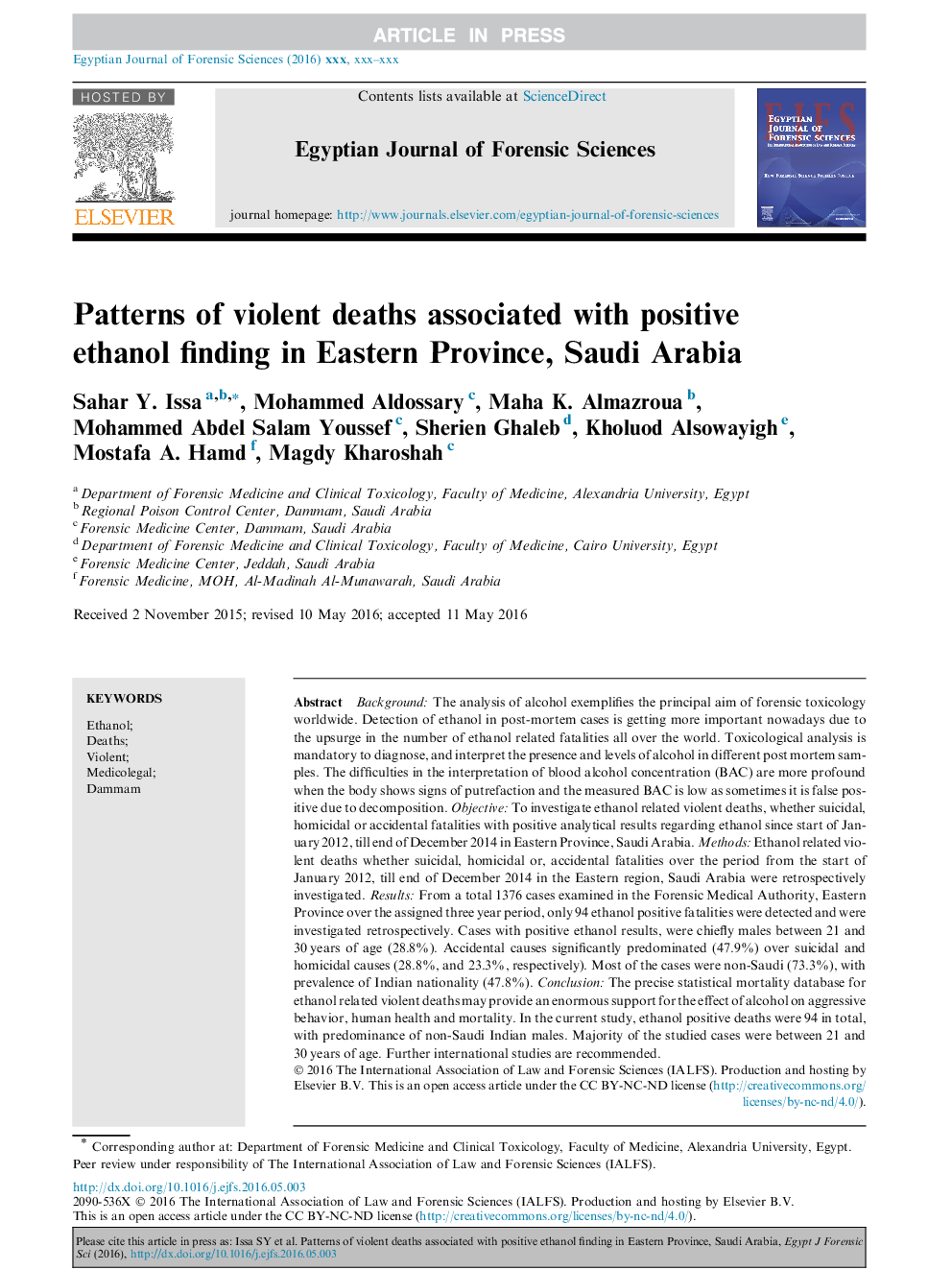| Article ID | Journal | Published Year | Pages | File Type |
|---|---|---|---|---|
| 7531177 | Egyptian Journal of Forensic Sciences | 2016 | 8 Pages |
Abstract
Background: The analysis of alcohol exemplifies the principal aim of forensic toxicology worldwide. Detection of ethanol in post-mortem cases is getting more important nowadays due to the upsurge in the number of ethanol related fatalities all over the world. Toxicological analysis is mandatory to diagnose, and interpret the presence and levels of alcohol in different post mortem samples. The difficulties in the interpretation of blood alcohol concentration (BAC) are more profound when the body shows signs of putrefaction and the measured BAC is low as sometimes it is false positive due to decomposition. Objective: To investigate ethanol related violent deaths, whether suicidal, homicidal or accidental fatalities with positive analytical results regarding ethanol since start of January 2012, till end of December 2014 in Eastern Province, Saudi Arabia. Methods: Ethanol related violent deaths whether suicidal, homicidal or, accidental fatalities over the period from the start of January 2012, till end of December 2014 in the Eastern region, Saudi Arabia were retrospectively investigated. Results: From a total 1376 cases examined in the Forensic Medical Authority, Eastern Province over the assigned three year period, only 94 ethanol positive fatalities were detected and were investigated retrospectively. Cases with positive ethanol results, were chiefly males between 21 and 30Â years of age (28.8%). Accidental causes significantly predominated (47.9%) over suicidal and homicidal causes (28.8%, and 23.3%, respectively). Most of the cases were non-Saudi (73.3%), with prevalence of Indian nationality (47.8%). Conclusion: The precise statistical mortality database for ethanol related violent deaths may provide an enormous support for the effect of alcohol on aggressive behavior, human health and mortality. In the current study, ethanol positive deaths were 94 in total, with predominance of non-Saudi Indian males. Majority of the studied cases were between 21 and 30Â years of age. Further international studies are recommended.
Related Topics
Health Sciences
Medicine and Dentistry
Forensic Medicine
Authors
Sahar Y. Issa, Mohammed Aldossary, Maha K. Almazroua, Mohammed Abdel Salam Youssef, Sherien Ghaleb, Kholuod Alsowayigh, Mostafa A. Hamd, Magdy Kharoshah,
